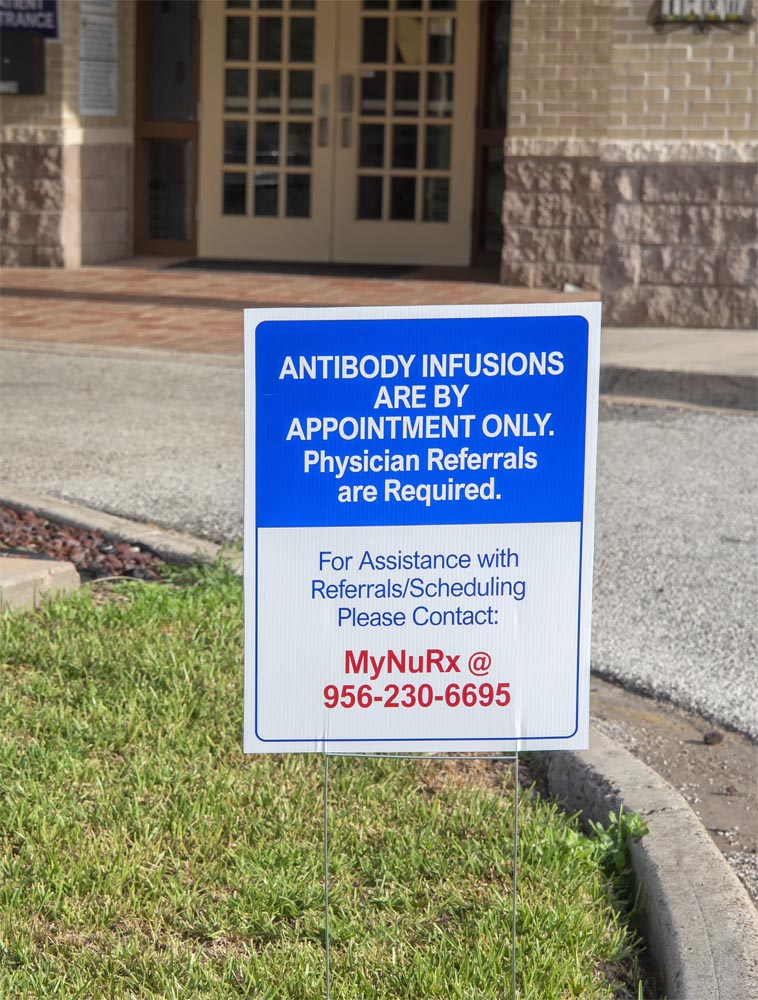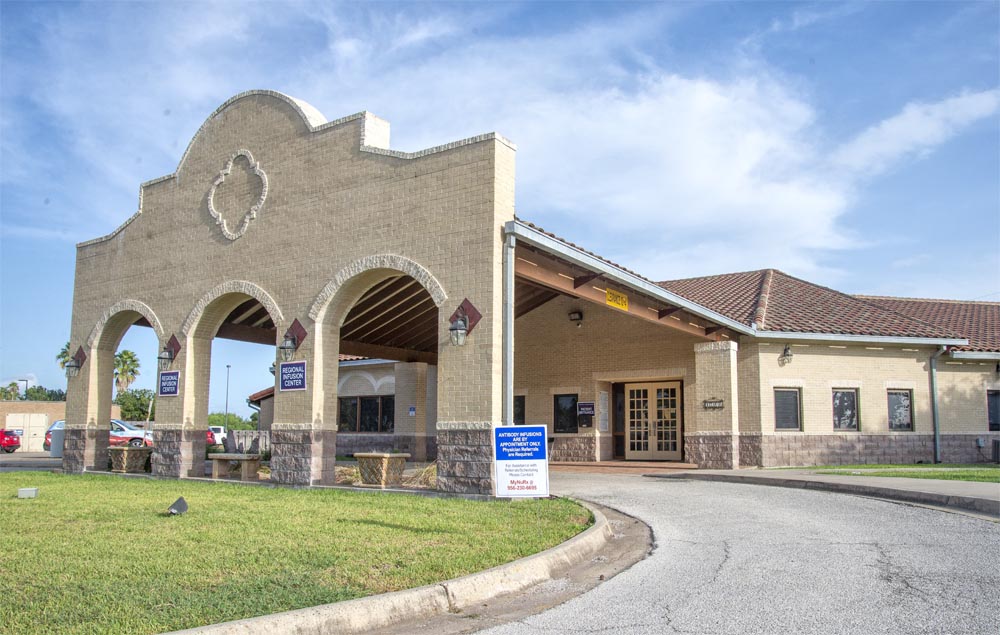HARLINGEN — The numbers keep climbing, the ICUs are overflowing, and the so-called “pandemic of the unvaccinated” continues to push hospitals to the breaking point.
“It is the Delta variant, probably 85 to 90 percent,” said Dr. Jamil Madi, chief of critical care and medical ICU director for the Valley Baptist Medical Center in Harlingen.
Madi is also on staff at Valley Baptist in Brownsville and at Harlingen Medical Center, and all three hospitals are stressed by the overflow of COVID-19 patients.
“The large majority of hospitalized newly-diagnosed COVID patients are unvaccinated, over 98 percent,” he said.
The surge this year comes a little later than last year, he said. But the Rio Grande Valley is at the same place it was in late June or early July of 2020.
“I think more people are getting vaccinated but not at a fast enough rate,” Madi said. “We wanted them to get vaccinated yesterday. We wanted them to get vaccinated since three months ago or six months ago or eight months ago.”
He expressed frustration with people who are still declining to get vaccinated, insisting that the vaccines are safe and effective.
“The proof is in the pudding,” he said. “I wish I could open up my hospitals and the ICUs for everyone to come and see, which I can’t, then people would have an idea to the truth of what is going on.”
Cameron County Health Director James Castillo spoke on the issue of vaccine hesitancy.
“There are some valid reasons why people are concerned about the vaccine,” he conceded. “At the very beginning, it had gone through all phases of the clinical trials. Tens of thousands of participants had volunteered for the experimental part of the vaccine. Then we had a better idea of its safety, enough that it was given an emergency use authorization.”
That term “emergency use” scared people, many of whom thought that meant the vaccine hadn’t gone through all the necessary tests to ensure safety and efficacy. In reality, though, emergency use meant a large portion of the government paperwork was simply bypassed to speed things along.
As millions of people began receiving their first and then their second dose, others hesitated. They didn’t want to be the first to receive a shot they weren’t sure was safe.
“They didn’t want to be first in line, they want to stand back and see what happens, right?” he said. “And now we know how safe this vaccine is. People were worried there could be side effects we don’t know about, that we won’t know about until millions of people get it.”
Some of these people come off as a bit self-serving, he suggested, and uninformed.
“I bet there have been a bunch of people holding out, thinking why should they take any risks,” he said. “Let everybody else take the risk for them, and this is going to go away. So why should they take any risks? COVID is going away.”

The arrival of the Delta variant is clear enough evidence that COVID-19 isn’t “going away” anytime soon. Vaccination rates have increased since Delta’s arrival — but not nearly enough. Some people are still on the fence, still declining the vaccine.
The problems generated by this phenomenon are legion, Madi said.
“The ICUs are already full, they are overflowing,” he said. “We are overflowing them to other areas, whether it’s emergency rooms or other sections of the hospital that are makeshift ICUs.”
The overload of unvaccinated COVID-19 patients filling the hospitals has had a ripple effect.
“Patients that come in with conditions other than COVID are likely to suffer the consequences of that because we don’t have the beds; we don’t have the personnel; we don’t have the staff,” Madi said. “We’ve had patients come in with serious issues and we can’t even transfer. It’s been an ordeal.”
The ordeal is even further aggravated by the lack of response from other medical agencies. Last year, medical professionals and agencies, including the military, from throughout the state and across the nation responded to the local crisis by sending much needed personnel and equipment to assist.
This year it’s a different story.
“We have been able to get some Locums, but we haven’t been able to staff our floors with enough nurses and respiratory therapists and other ancillary care like we had with the state and government help in prior surges,” Madi said.
Locums are physicians working temporarily in locations separate from their usual practices.
“All state and federal instated nurses contracts ended back in April and they all left,” Madi said. “This new surge seems like a big ‘You take care of this one’ to hospitals and acute care centers. It feels like ‘Cry Wolf’ and no one cares to listen. And the wolf is back.”
With regard to vaccine hesitancy, he said too many people are getting their information from social media and other unreliable sources, and the effects are devastating. Misinformation translates into lower vaccination rates and that in turn results in overloaded hospitals full of the unvaccinated while people with other conditions can’t be seen, experts say.
And then there are the conspiracy theories such as the one about the government putting tracking devices into the shots, which Castillo addressed.
“The best retort I’ve heard to that one is, ‘Don’t worry, they’re tracking you through your phones,’” he said. “‘You don’t need the shot for that, it’s called a cell phone.’ That is nonsense. It’s not even funny to hear that kind of misinformation. That’s basically info-terrorism. Whoever’s making that stuff up is putting beliefs out there that are based on science fiction. And it’s going to get somebody killed because they believed it.”
Even highly educated people with advanced degrees have come up with counter-productive theories of their own, experts have said.
“You can have a lot of education but if you’re not going to believe the published, validated, peer-reviewed science, and you’ve just decided to make stuff up or believe stuff just to say the opposite,” Castillo said, stopping with frustration.
Madi hailed the creation of infusion centers where COVID-19 patients can receive monoclonal antibodies to reduce the severity of their symptoms. The most recent of these was the Regional Infusion Center in Harlingen, but others have opened in Port Isabel and other locations.
“It’s absolutely important,” Madi said. “All the initial studies that have been done around the nation show that it does significantly decrease hospitalizations by up to 50 percent. So if you’re a candidate for infusion, if you satisfy the criteria for infusion, if it’s done early enough, it can prevent people from being hospitalized. It can prevent people from dying. It can keep people from going to the ICU.”
Dr. Michael Muniz, pharmacist and owner of My NuRx at 1614 W. Filmore Ave., has been doing infusions at that location along with his physician assistant, Vanessa Cobarrubias. They also manage the medications at the Regional Infusion Center which just opened at 1720 Treasure Hills Blvd.
“At our pharmacy, everything is going well,” Muniz said. “We’re getting a lot of referrals. We follow up with our patients and we’re seeing that the results are very good. A lot of people aren’t ending up in the hospital. We’ve had a couple that have gone to the hospital, but they have been there for two to three days and then they’re discharged.”
Manny Vela, CEO of Valley Baptist Medical Center-Harlingen, said the infusions are critical to dealing with the crisis which has filled the hospital with COVID patients.
“We know for a fact that people who qualify for and seek that treatment are staying out of the hospital to a large degree,” he said. “I’m being told that about 80 percent of the people who get infused do not ultimately need hospital level care.”
He pointed out again that an overwhelming number of COVID-19 patients, about 95 percent, are unvaccinated.
“From our perspective right now, this is a pandemic of the unvaccinated based on our numbers that we continue to see,” he said.
RELATED READING:
Willacy working to boost shot rate; Officials plan infusion center as cases soar




